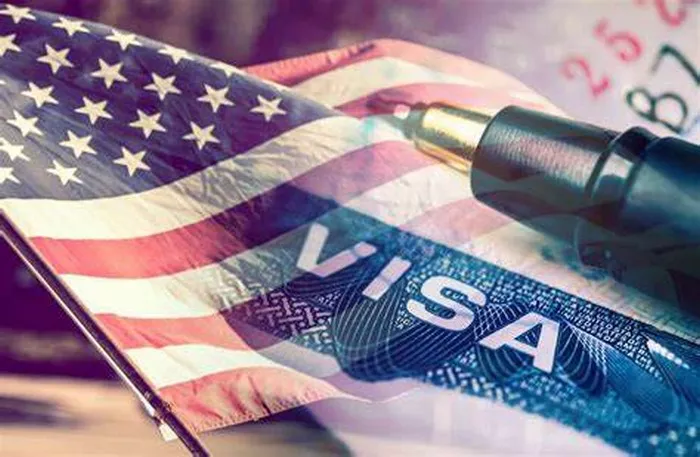In the dynamic landscape of immigration, the V1 visa for the United States stands out as a significant avenue for individuals seeking entry for a specific purpose. With its unique features and requirements, the V1 visa opens doors to various opportunities for both applicants and the U.S. economy. In this comprehensive guide, we delve into the intricacies of the V1 visa, shedding light on its eligibility criteria, application process, benefits, and challenges.
Understanding the V1 Visa: A Brief Overview
The V1 visa, also known as the Treaty Trader visa, is a non-immigrant visa category designed for individuals engaged in substantial trade between their home country and the United States. It falls under the broader category of E visas, which are reserved for treaty traders and investors. The V1 visa specifically targets traders, facilitating their entry into the U.S. to conduct trade activities under specific treaties.
Eligibility Criteria: Who Qualifies for a V1 Visa?
To qualify for a V1 visa, applicants must meet certain criteria outlined by the U.S. Citizenship and Immigration Services (USCIS). These criteria include:
Nationality: Applicants must be nationals of a country that maintains a treaty of commerce and navigation or a bilateral investment treaty with the United States.
Substantial Trade: Applicants must be involved in substantial trade, which refers to the continuous flow of sizable international trade items, involving numerous transactions over time.
Trade Volume: The trade conducted by the applicant must be principally between the United States and the treaty country.
Purpose of Entry: The primary purpose of the applicant’s entry to the U.S. must be to engage in trade activities.
Meeting these eligibility criteria is crucial for a successful V1 visa application. Applicants must provide substantial evidence to demonstrate their eligibility, including documentation of trade activities, business relationships, and the nature of their trade.
Application Process: Navigating the V1 Visa Journey
The application process for a V1 visa involves several steps, each requiring careful attention to detail and adherence to USCIS guidelines. The process typically unfolds as follows:
Document Preparation: Applicants must gather and organize the necessary documentation to support their visa application. This may include proof of nationality, evidence of substantial trade, business registration documents, financial statements, and a detailed business plan.
Form DS-160: Applicants must complete Form DS-160, the Online Nonimmigrant Visa Application. This form collects biographical information and details about the purpose of the trip.
Visa Interview: Upon completing the DS-160 form, applicants are required to schedule and attend a visa interview at the U.S. embassy or consulate in their home country. During the interview, applicants will be asked questions about their trade activities, business relationships, and intentions in the United States.
Additional Documentation: Depending on the specifics of the case, applicants may be asked to provide additional documentation or clarification to support their application.
Visa Issuance: If the visa application is approved, the applicant will receive their V1 visa, allowing them to enter the United States for trade-related purposes.
It’s essential for applicants to familiarize themselves with the application process and seek guidance from legal professionals or immigration consultants to ensure a smooth and successful application experience.
Benefits of the V1 Visa: Opportunities Await
The V1 visa offers a range of benefits to eligible applicants, making it an attractive option for individuals engaged in international trade. Some of the key benefits include:
Flexibility: V1 visa holders can enter and exit the United States freely for the duration of their visa validity, allowing them to conduct trade activities as needed.
Dependents: V1 visa holders may be accompanied by their spouse and unmarried children under the age of 21, who are eligible for derivative visas (V2 visas). Dependents can study in the U.S. but are not permitted to work without obtaining appropriate authorization.
Renewal and Extension: V1 visas can be renewed or extended, provided the applicant continues to meet the eligibility criteria and maintains their trade activities.
Path to Permanent Residence: While the V1 visa itself does not lead directly to permanent residence (green card) status, individuals may explore other immigration options, such as the EB-5 Immigrant Investor Program, to obtain permanent residency in the United States.
These benefits underscore the value of the V1 visa as a tool for facilitating international trade and fostering economic cooperation between the United States and treaty countries.
Challenges and Considerations: Navigating Potential Hurdles
While the V1 visa offers numerous advantages, applicants may encounter challenges and considerations along the way. Some of the common challenges include:
Documentation Requirements: Meeting the stringent documentation requirements can be a complex and time-consuming process, requiring meticulous preparation and attention to detail.
Proof of Substantial Trade: Providing sufficient evidence of substantial trade can be challenging, particularly for small businesses or startups with limited operating history.
Visa Denials: Despite meeting the eligibility criteria, applicants may face visa denials due to various reasons, including inconsistencies in documentation or concerns about the legitimacy of the trade.
Duration of Stay: V1 visa holders must adhere to the terms of their visa and depart the United States before the expiration date to avoid overstaying and potential immigration violations.
Navigating these challenges requires careful planning and preparation, as well as proactive engagement with legal experts or immigration professionals to address any concerns or issues that may arise.
Conclusion
In conclusion, the V1 visa presents a valuable opportunity for individuals engaged in substantial trade between the United States and treaty countries. By understanding the eligibility criteria, navigating the application process, and addressing potential challenges, applicants can unlock the benefits of the V1 visa and pursue their trade objectives with confidence. As globalization continues to reshape the economic landscape, the V1 visa remains a vital tool for fostering international trade partnerships and driving economic growth on a global scale.


